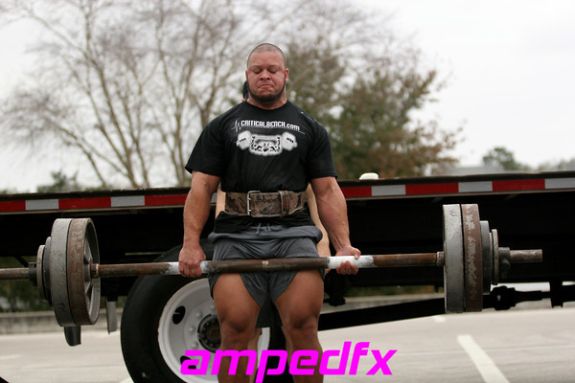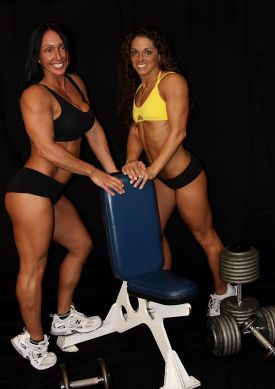Forget Everything You've Learned About Muscle!
by Shin Ohtake creator of Max Workouts

The fitness community has always been obsessed about muscle and how it makes us lean, fit, and strong, but there's a group of researchers that argue that our focus has been on the wrong part of the anatomy, especially when it comes to maximizing your fitness potential while staying injury free.
The most recent issue of Men's Health had a very interesting article by Christopher McDougall titled, "Everything You Know About Muscle Is Wrong" (note: this article is equally beneficial to both men and women). The article briefly looks into the world of fascial research. Fascia is a fibrous connective tissue that surrounds and encases your muscles, and intricately intertwines and criss crosses through out your body creating sling like structures that pull on tendons and ligaments which are connected to your muscles and attached to your bones - which allows initiation of movements as well as influencing your body posture.
Dr. Schleip from the Fascial Research Project in Germany, states that fascia is the structure that we should be concentrating on, not muscle:
"Fascia isn't just taking orders, it's also issuing them. It reacts to your environment and ultimately creates what Schleip calls "structural compensation." The mechanism works like this: Every move you make is a physical experiment. If the experiment works-say, you swish a jumper while cocking your head to the side-it becomes a habit. All those little habits become locked in as posture. Over time, posture becomes structure: The man who accidentally nailed a three while his ear was itchy now feels comfortable only when his head is slightly off kilter."
"Connective tissue is the Saint Bernard dog of the body-it's slow and loyal," Schleip says. "Once it's formed into position, it'll stick there." You can contort all you want in search of that mythical ideal alignment, but the odds are against you. The pull of your fascia is so ingrained in your movements, your friends can recognize you instantly at a distance before they even see your face."
Basically, any bad habits, postures, and movements that you may have developed are all ingrained into your fascial system. So your fascia may be more to blame for injuries, as well as stagnating you from reaching your maximum athletic and fitness potential. 
For instance, if you sit at work with a rounded back and slouched shoulders your fascia learns to hold that position by elongating certain areas and shortening other areas, kind of like molding a shell around your muscle so that you can efficiently keep the "bad" posture. This will obviously affect your body when you stand erect and perform other activities that require your fascia to be shorter in areas that are supposed to longer and longer in areas that need to be shorter. This can lead to injuries and inefficient movement patterns, and for athletes it may be the difference between throwing a 100 mph fast ball vs. a 90 mph fast ball. Point is, no matter how much you train, until you reprogram your fascia, you'll never rid yourself of existing injuries or achieve your full athletic/fitness potential.
"...the fascia actually recoils, allowing you to use far more of the force you generate than would be otherwise possible." That's why when you rifle a fastball, the size of your muscles is rarely the most important factor.
What does this mean in terms of your fitness?
"For many people, fitness is still all about lifting weights to build bulk," Myers says. "But what does that make you fit for? I'd argue that this . . ."-he taps a key on his laptop and brings up a slide-"is a much more physically fit human than a bodybuilder is." On the screen is a photo of a baby boy rolling on his back, blissfully drinking a bottle that he holds with his feet. Cute, sure; but more important, the little nipper is limber, balanced, and able to match impulse with action. "You are fit if you can adapt to the demands of your environment with ease and imagination," Myers says.
And that to me has always been the bottom line...survival of the fittest. That's how we evolved in the first place, so why shouldn't that be our guide to defining how fit we are? Optimizing your fascial health as well as your muscle potential in a well balanced, coordinated, and functional manner so you can best adapt to any changes in the environment will allow you to achieve full fitness potential.
So now that you know injuries and fitness potential is dependent as much (or perhaps even more) on your fascial health as your muscles, what can you do about it? How do you train to build a lean and fit body while maximizing your fascial system so you can get the most out of your fitness and prevent injuries at the same time?
Functional training.
Functional training involves using exercises that allow your entire body to move in ways that improve your daily activity.
Here are some examples of functional exercises:
- Squat Press Ups
- Overhead Squats
- Deadlift High Pulls
Since functional training involves using your entire body in ways that make you more "functional" you're essentially programming your fascia to be more functional. By having a healthy functional fascial system you're essentially helping your body maximize fitness and athletic potential - you're enabling the muscles to work at their full potential, as well as allowing your fascia to take advantage of it's "recoil" potential.
So, if you've been frustrated by your lack of fitness improvement, or perhaps you've been suffering from chronic injuries that don't seem to go away, it's time to look beyond training just your muscles and start reprogramming your fascia by incorporating functional training into your fitness regimen.
Shin Ohtake is the author of the world-famous fitness program, MAX Workouts. To learn more about how you can get ultra lean and toned with shorter workouts, visit http://www.MaxWorkouts.com
More Articles By Shin Ohtake
Return to the Workout Articles Archive
|